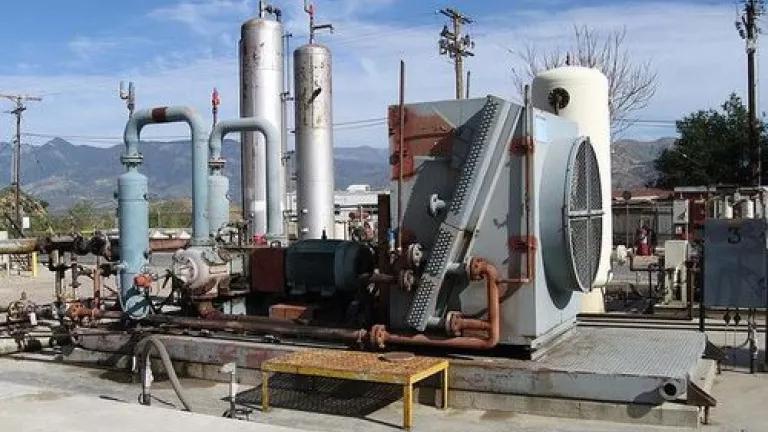On a Climate Roll: EPA Starts to Tackle Methane, Following Historic Carbon Pollution Standards

Earlier this month, the U.S. EPA took the historic step of setting the first-ever standards for carbon dioxide pollution from power plants, our nation's largest source of climate pollution. This week, the agency took another step forward by starting the process of addressing the second-largest industrial source of climate pollution: rampant methane pollution from the oil and gas industry.
Every year, the oil and gas industry wastes enough methane to power nearly 6 million American homes. Moreover, because methane is a highly potent greenhouse gas, this waste makes the oil and gas sector the country's second largest industrial contributor to climate change. Fortunately, much of the industry's methane pollution comes from leaks and intentional venting that can be identified and curbed with existing, low-cost technology and better maintenance practices. A 2014 report by NRDC and our colleagues at the Clean Air Task Force and Sierra Club--called Waste Not--explains how.
The President highlighted the threat posed by the industry's methane pollution in January of this year, announcing a goal of reducing methane pollution from the oil and gas sector 40 to 45 percent from 2012 levels by 2025. On Tuesday, EPA took a major step towards that goal by proposing standards to reduce methane emissions from new and modified oil and gas wells and equipment.
Building on a series of EPA white papers that looked at readily available methane controls, the proposed new source standards rely on proven, low cost and currently available measures for reducing or eliminating methane emissions from a range of sources. And because methane can be sold at the end of the pipeline in the form of natural gas, many of these measures quickly pay for themselves. They also pay for themselves in reduced costs from climate change impacts. As the standards help protect our climate by reducing methane, they will also help protect families and communities living with the burden of oil and gas development by simultaneously reducing toxic air pollution that aggravates asthma and contributes to cancer.
It's important to note, however, that these standards will only cover part of the problem. To truly address the methane leaking from our oil and gas industry, EPA must take the critical next step of adopting similar standards to control methane pollution from existing oil and gas sources nationwide. That's because the oil and gas infrastructure already operating around the country accounts for the vast majority of the sector's methane problem and will be around, continuing to leak, for many years. On top of that, recent studies (for example, see here and here) indicate that our current assessments of the problem may significantly underestimate the true quantity of methane leaking from our oil and gas infrastructure.
EPA will have to tackle these existing methane sources--and quickly--in order to meet the President's commendable methane reduction goals and combat global climate change. Thankfully, this week's announcement provides the legal and technical groundwork to extend the use of these available technologies to curb existing methane sources next.
After controlling carbon pollution from the power sector, curbing methane from the oil and gas sector is the most significant step that the Administration can take to fight climate change. They're off to a good start--and now must keep moving forward.
This post co-authored with Ben Longstreth
"Compressor Station" - Rick Hurdle via Flickr
